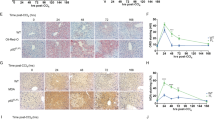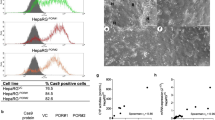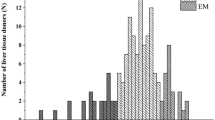Abstract
The expression of cytochrome P450 genes directly within target cells is an important determinant of human susceptibility to cancers and other chemically initiated diseases. One pivotal gene, C Y P 1 A 1 codes for an inducible cytochrome P450 isozyme 1A1 responsible for the bioactivation of numerous carcinogenic polycyclic hydrocarbons. In the present study, the effects of 3-methylcholanthrene, a polycyclic aromatic hydrocarbon, on the activity and expression of CYP1A1 and the protective effects of diallyl sulfide on 3-methylcholanthrene-induced changes in mice liver and lung were investigated. After a four daily 3-methylcholanthrene-treatment (25 mg/kg, i.p.), liver and lung microsomal 7-ethoxyresorufin-Odeethylase (EROD) activity, associated with CYP1A1, was increased. A corresponding increase in the level of CYP1A1 mRNA was observed in mouse liver and lung after 3-methylcholanthrenetreatment by Northern blot analysis. Diallyl sulfide reduced 3-methylcholanthrene-induced CYP1A1 mRNA expression and its associated EROD activity in mouse liver and lung. The modulation of CYP1A1 mRNA by 3-methylcholanthrene and diallyl sulfide was mainly due to transcriptional regulation.
Similar content being viewed by others
Article PDF
Author information
Authors and Affiliations
Rights and permissions
This is an Open Access article distributed under the terms of the Creative Commons Attribution Non-Commercial License (http://creativecommons.org/licenses/by-nc/3.0/) which permits unrestricted non-commercial use, distribution, and reproduction in any medium, provided the original work is properly cited.
About this article
Cite this article
Hong, YS., Park, HY. & Park, SS. Diallyl sulfide down-regulates polycyclic aromatic hydrocarbon-induced cytochrome P450 1A1 in mouse liver and lung. Exp Mol Med 28, 167–172 (1996). https://doi.org/10.1038/emm.1996.26
Published:
Issue date:
DOI: https://doi.org/10.1038/emm.1996.26



